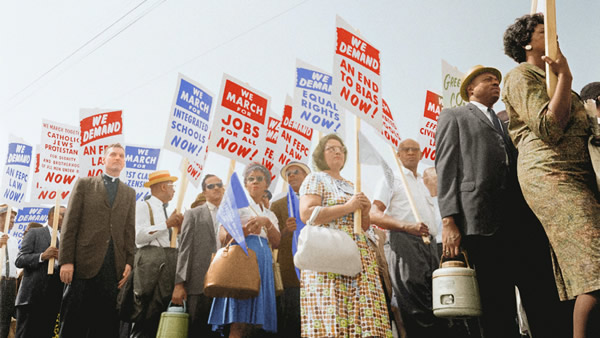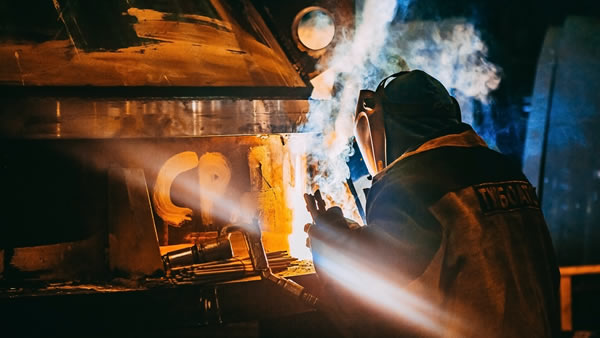Definition
The definition of forced labour has been settled since the International Labour Organisation (ILO) passed the ILO Forced Labour Convention (No. 29) in 1930. According to this convention, forced or compulsory labour is “all work or service which is exacted from any person under the threat of a penalty and for which the person has not offered himself or herself voluntarily.” So it consists of three elements. The first is a work or service, which includes all forms of work, service and employment in all sectors (formal and informal), but excludes compulsory education or training. The second is that the work is performed under the threat of a penalty. This refers to all forms of penal sanctions, including various forms of physical and psychological coercion or the retention of identity papers. The third is involuntariness, meaning the lack of “the free and informed consent of a worker to take a job and his or her freedom to leave at any time.” Compulsory military service, normal civic obligations, prison labour (under certain conditions), work in emergency situations and minor communal services within a community are exempted from this qualification. This definition has been reaffirmed in the ILO Protocol 2014 to the Forced Labour Convention 1930.
The definition of forced labour was deliberately constructed in elements, rather than listing prohibited forms of labour. This enables practitioners and supervisory bodies of the ILO to address a wide range of forced labour practices. As expressed in a 2012 General Survey of the ILO, this definition encompasses “traditional practices of forced labour, such as vestiges of slavery or slave-like practices, and various forms of debt bondage, as well as new forms of forced labour that have emerged in recent decades, such as human trafficking.” Nowadays, forced labour is also called modern slavery, as to “shed light on working and living conditions contrary to human dignity.”
Legislation
In 1957, the ILO adopted the ILO Abolition of Forced Labour Convention No. 105, which specifically addresses the abolition of forced labour imposed by state authorities. It prohibits forced labour as a punishment for the expression of political views, for the purposes of economic development, as a means of labour discipline, as a punishment for participation in strikes and as a means of racial, religious or other discrimination. Both Forced Labour Conventions (No. 29 and 105) enjoy near universal ratification. Forced labour is also included in the definition of the worst forms of child labour in the Worst Forms of Child Labour Convention (No. 182). This means member states must ensure its prohibition and elimination as a matter of urgency.
Fundamental Principles and Rights at Work
Forced labour has subsequently been declared a fundamental labour right in the ILO Declaration on Fundamental Principles and Rights at Work. This means all member states must respect and promote this principle and right, whether or not they have ratified the relevant Conventions.1 Additionally, the elimination of forced labour is the fourth principle of the Labour Standards of the United Nations Global Compact and is referred to in the United Nations Guiding Principles on Business and Human Rights. The responsibility for companies to contribute to the elimination of forced labour has also been included in the OECD Guidelines for Multinational Enterprises.
Human rights
Furthermore, not to be subjected to forced labour is considered a fundamental human right, as reflected in the prohibition of slavery and forced or compulsory labour in article 4 of the Universal Declaration of Human Rights and article 8 of the International Covenant on Civil and Political Rights.
In 1926, the League of Nations concluded the Convention to Suppress the Slave Trade and Slavery (the Slavery Convention). Article 5 discusses the conditions which need be present to prevent cases of forced labour to become analogous to conditions of slavery. As decided in the 1953 Protocol amending the Slavery Convention, the United Nations now continues the duties and functions of the Slavery Convention. The Slavery Convention and its 1953 Protocol were augmented in 1956 with the passing of the Supplementary Convention on the Abolition of Slavery, the Slave Trade, and Institutions and Practiced Similar to Slavery, intended to intensify the measures taken to eradicate slavery practices globally.
A number of conventions of the United Nations dedicated to the elimination of human trafficking and protection of migration specifically refer to the protection of vulnerable people against forced labour. In 1950 the United Nations passed the Convention for the Suppression of the Traffic in Persons and of the Exploitation of the Prostitution of Others. In 1990 the International Convention on the Protection of the Rights of all Migrant Workers and Members of their Families (ICPMW) was enacted by the United Nations. In the preamble it refers to the work of the ILO on the topic of forced labour. And in article 11 it states that “no migrant worker or member of his or her family shall be required to perform forced or compulsory labour” or “be held in slavery or servitude”. In 2000, two Protocols supplementing the United Nations Convention against Transnational Organized Crime were enacted: the Protocol against the Smuggling of Migrants by Land, Sea and Air and the Protocol to Prevent, Suppress and Punish Trafficking in Persons Especially Women and Children.
Regional context
In a regional context, forced labour has been prohibited in article 4 of the European Convention on Human Rights and article 6 of the Inter American Convention on Human Rights. Article 5 of the African Charter on Human and People's Rights prohibits all forms of exploitation and degradation of man, particularly slavery and slave trade inter alia.
1 https://www.ilo./declaration/lang--en/index.htm






